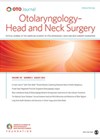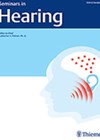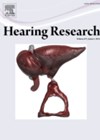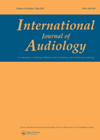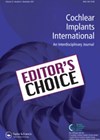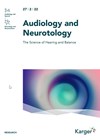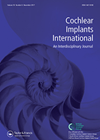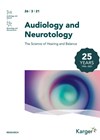
Journal Reviews
Systematic review and meta-analysis showing benefit of cochlear implantation in adults with single-sided deafness
This article presents results of a systematic review and meta-analysis to further investigate the impact of unilateral cochlear implantation (CI) in adults with single-sided deafness (SSD) with regards to speech perception in quiet and noise, tinnitus, sound localisation and quality...
What is trendy?
This edition of Seminars in Hearing focused on the results from the MarkeTrak 2022. Now, the relevance to the UK market might be slight limited with some of the data but there are certainly a few interesting nuggets for our...
An understandable backup
This small study comparing the auditory temporal processing of seven younger adults with that of seven older adults does not show anything breathtakingly new in its conclusions. After the assessment to rule out compounding factors such as middle ear pathology,...
Third-party disability in cochlear implantation
The authors of this study note significant third-party disability experienced by significant others (SO) or communication partners of persons with hearing impairment (PHI). The study explored contextual and psychosocial factors for successful auditory rehabilitation, advocating for the importance of including...
It is all so COSI…
Something which we have realised for a long time in the UK is the importance of the clinician in the assessment and long-term adoption of hearing aids. This common sense article outlines the need for more individualised patient pathways, thinking...
Music training for cochlear implant users
The ability to enjoy music is something that is important to most people and contributes to wellbeing, as well as holding cultural significance. However, the speech signal is generally prioritised for those with cochlear implants (and indeed hearing aids). Improving...
Virtual reality simulation training for cochlear implant surgery
Temporal bone virtual reality (VR) simulation training has been shown to be a useful tool for learning mastoidectomy. The authors aimed to evaluate the role of VR in cochlear implant (CI) surgery. The study was performed as part of a...
Cochlear implants in the over 80s
The UK has an ageing population. Seven percent of the over 80s population have bilateral severe to profound hearing loss which can lead to associated negative outcomes (social isolation, depression and reduced quality of life). Cochlear implantation (CI) can successfully...
Impedance for different electrode types
Measuring cochlear implant (CI) electrode impedances is common in CI programming appointments to measure the integrity of the implant e.g. whether there are any open or short electrodes. This is because impedance measures the flow of current between intra and...
Moving towards implanting children below 12 months of age
Newborn hearing screening has ensured that deaf infants are identified soon after birth so that habilitation can begin as early as possible. Cochlear implantation is a key component of early intervention for some children, but it is often not performed...
Robotic insertion of electrode array in cochlear implantation
Cochlear implants (CIs) are commonly used for profound bilateral hearing loss. They have specific national guidance for their insertion, however patients with a substantial residual acoustic hearing are potential CI candidates. Preservation of this residual hearing can be sought with...
Cochlear implantation following radiotherapy treatment of vestibular schwannomas
The authors presented a case report and systematic review assessing the outcomes of patients from cochlear implantation (CI) following radiotherapy treatment for vestibular schwannoma (VS). Outcomes of cochlear implantation in these patients are uncertain due to the combination of both...

